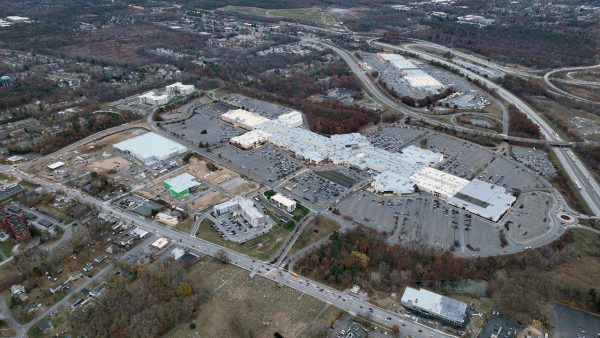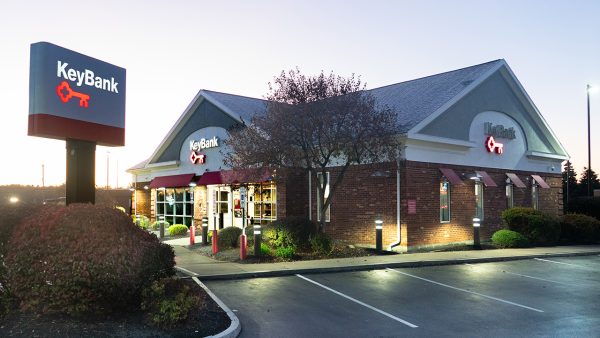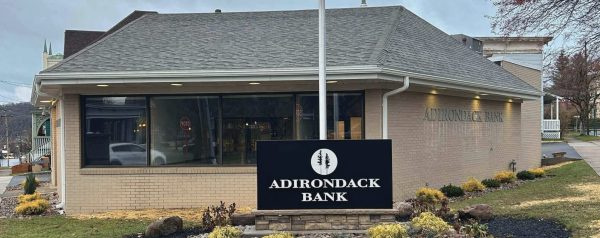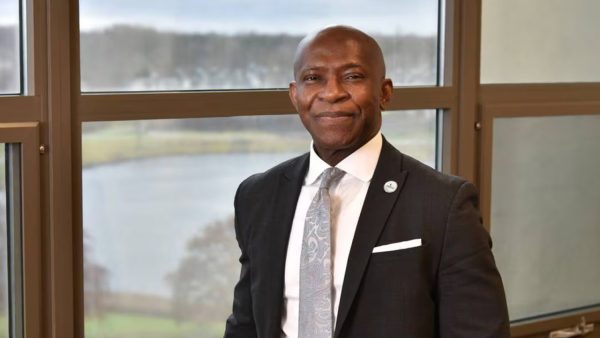Get our email updates
Stay up-to-date on the companies, people and issues that impact businesses in Syracuse, Central New York and beyond.
What's New
Upcoming Events
CNYBJ Job Board

East Adams Neighborhood Transformation Plan work proceeds
SYRACUSE, N.Y. — East Adams Phase I is a $102 million affordable and mixed-income housing development that will create 132 modern, energy-efficient homes in the

Work continues on Dana Lyon Apartments project in Bath
BATH, N.Y. — Pike Construction Services says its crews are making major headway in renovating and transforming the former Dana Lyon Elementary School building in the village of Bath (Steuben County) into the Dana Lyon Apartments. It’s a nearly 50-unit, mixed-use development that will include affordable and supportive housing. In a Dec. 3 Facebook post,
Get Instant Access to This Article
Become a Central New York Business Journal subscriber and get immediate access to all of our subscriber-only content and much more.
- Critical Central New York business news and analysis updated daily.
- Immediate access to all subscriber-only content on our website.
- Get a year’s worth of the Print Edition of The Central New York Business Journal.
- Special Feature Publications such as the Book of Lists and Revitalize Greater Binghamton, Mohawk Valley, and Syracuse Magazines
Click here to purchase a paywall bypass link for this article.
BATH, N.Y. — Pike Construction Services says its crews are making major headway in renovating and transforming the former Dana Lyon Elementary School building in the village of Bath (Steuben County) into the Dana Lyon Apartments.
It’s a nearly 50-unit, mixed-use development that will include affordable and supportive housing.
In a Dec. 3 Facebook post, titled “Exciting progress at the Dana Lyon Apartments,” the Rochester–based construction company said, “This former school is well on its way to becoming beautiful new homes. Sidewalks and binder are in place for winter, most windows are installed, and exterior masonry restoration is nearly done. Playground features and permanent fencing are also wrapping up before the cold hits.”
Pike continued, “Inside, finishes are moving fast — first apartments are almost ready for final walkthroughs! Still on track for a Summer 2026 opening.”
Project background
In November 2024, the office of New York Gov. Kathy Hochul announced it had awarded Providence Housing Development Corporation $1.9 million to develop eight units of permanent supportive housing in Bath for individuals with serious mental illness or substance-use disorder who have experienced homelessness.
Part of a larger project, the Dana Lyon Apartments involves the preservation and adaptive reuse of the elementary school building. It will offer on-site laundry facilities, service office space, a management office, exercise room, community room, playground and outdoor greenspace, per the announcement. The completed project will also feature commercial space that will be leased for the operation of a community arts center. Support services will be provided by Catholic Charities Steuben/Livingston on site and through other community organizations via linkage agreements, the governor’s office said.
Pike Construction Services offers pre-construction, construction, design-build, self-perform, development, and facility services, according to its website. The firm has additional offices in Albany, Utica, Syracuse, Buffalo, as well as Orlando, Florida, according to its website.

Pyramid Management Group secures loans for Albany properties
SYRACUSE, N.Y. — The owner and operator of Destiny USA in Syracuse says it has secured a new five-year, $193 million CMBS (commercial mortgage-backed security)

COR secures four new tenants for former Price Chopper site in Clay
CLAY, N.Y. — COR Development expects it will be the fall of 2026 when four new retail tenants will move into the space that was previously occupied by a Price Chopper store along Route 31 in the town of Clay. The project will turn the former Price Chopper building into a multi-tenant retail operation that
Get Instant Access to This Article
Become a Central New York Business Journal subscriber and get immediate access to all of our subscriber-only content and much more.
- Critical Central New York business news and analysis updated daily.
- Immediate access to all subscriber-only content on our website.
- Get a year’s worth of the Print Edition of The Central New York Business Journal.
- Special Feature Publications such as the Book of Lists and Revitalize Greater Binghamton, Mohawk Valley, and Syracuse Magazines
Click here to purchase a paywall bypass link for this article.
CLAY, N.Y. — COR Development expects it will be the fall of 2026 when four new retail tenants will move into the space that was previously occupied by a Price Chopper store along Route 31 in the town of Clay.

PHOTO CREDIT: ZOEYADVERTISING.COM
The project will turn the former Price Chopper building into a multi-tenant retail operation that will include four “well-known” and new-to-market national retailers, COR Development said in its Wednesday, Dec. 3 announcement.
Ross Dress for Less will occupy nearly 26,000 square feet, while Sierra Trading will operate in a space spanning 18,410 square feet. At the same time, Boot Barn will occupy a nearly 12,500-square-foot space, and Five Below will do business in a space covering 10,349 square feet.
The new tenants are moving into COR Center, which is located along Route 31, just west of the Route 481 interchange in Clay.
The redevelopment plan includes new façades, upgraded site improvements, and improved walkability throughout the property. Construction is currently underway, COR Development said.
The company says it will share updates and announcements on the COR Development website and social-media channels in the months leading up to the grand openings.
COR Center spans more than 515,000 square feet of retail, services, and dining space across a 100-acre site with 1,000 linear feet of road frontage, COR said. It is home to other major national tenants including Target, The Home Depot, Kohl’s, T.J. Maxx, Old Navy, Ulta, and PetSmart.

KeyCorp pays 4th quarter 2025 dividend in mid-December
KeyCorp (NYSE: KEY) — parent company of KeyBank, the No. 3 bank ranked by deposit market share in the 16-county Central New York region — has declared a quarterly cash dividend of 20.5 cents per share of its common stock for the fourth quarter of this year. The dividend is payable on Dec. 15, to
Get Instant Access to This Article
Become a Central New York Business Journal subscriber and get immediate access to all of our subscriber-only content and much more.
- Critical Central New York business news and analysis updated daily.
- Immediate access to all subscriber-only content on our website.
- Get a year’s worth of the Print Edition of The Central New York Business Journal.
- Special Feature Publications such as the Book of Lists and Revitalize Greater Binghamton, Mohawk Valley, and Syracuse Magazines
Click here to purchase a paywall bypass link for this article.
KeyCorp (NYSE: KEY) — parent company of KeyBank, the No. 3 bank ranked by deposit market share in the 16-county Central New York region — has declared a quarterly cash dividend of 20.5 cents per share of its common stock for the fourth quarter of this year.
The dividend is payable on Dec. 15, to holders of record as of the close of business on Dec. 2. At Key’s current stock price, the dividend yields about 4.25 percent on an annual basis.
Headquartered in Cleveland, Ohio, Key is one of the nation’s largest bank-based financial-services companies, with assets of about $187 billion as of the end of the third quarter of 2025. Its roots trace back 200 years to Albany. KeyBank has a network of about 1,000 branches and about 1,200 ATMs in 15 states — stretching from Maine to Alaska.

Adirondack Bank moves Little Falls branch to new location
LITTLE FALLS, N.Y. — Adirondack Bank on Dec. 8 formally opened the doors to its new Little Falls branch at 699 E. Main St., located at the corner across from Eastern Park and the Little Falls Public Library. It replaces the bank’s previous Little Falls branch, located about one-third of a mile down the road
Get Instant Access to This Article
Become a Central New York Business Journal subscriber and get immediate access to all of our subscriber-only content and much more.
- Critical Central New York business news and analysis updated daily.
- Immediate access to all subscriber-only content on our website.
- Get a year’s worth of the Print Edition of The Central New York Business Journal.
- Special Feature Publications such as the Book of Lists and Revitalize Greater Binghamton, Mohawk Valley, and Syracuse Magazines
Click here to purchase a paywall bypass link for this article.
LITTLE FALLS, N.Y. — Adirondack Bank on Dec. 8 formally opened the doors to its new Little Falls branch at 699 E. Main St., located at the corner across from Eastern Park and the Little Falls Public Library.
It replaces the bank’s previous Little Falls branch, located about one-third of a mile down the road at 500 E. Main St. Adirondack Bank closed that office at the end of the day on Dec. 5.
The bank says the new space offers the same service with enhanced features designed with customers’ banking needs in mind, according to an announcement on the Adirondack Bank website.
Founded in 1898, Adirondack Bank is a privately owned community bank with about $1 billion in assets that is headquartered in Utica. The bank operates 17 full-service and two limited-service branch locations in the counties of Oneida, Herkimer, Clinton, Essex, and Franklin, as well as a loan-production office in Syracuse.

SUNY Oswego’s Nwosu serves on board of national association for state schools
OSWEGO, N.Y. — The leader of an area SUNY school is now serving on the board of directors of the American Association of State Colleges and Universities (AASCU). SUNY Oswego President Peter Nwosu was one of five educational leaders elected to the AASCU board on Nov. 17 during the organization’s annual conference for presidents and
Get Instant Access to This Article
Become a Central New York Business Journal subscriber and get immediate access to all of our subscriber-only content and much more.
- Critical Central New York business news and analysis updated daily.
- Immediate access to all subscriber-only content on our website.
- Get a year’s worth of the Print Edition of The Central New York Business Journal.
- Special Feature Publications such as the Book of Lists and Revitalize Greater Binghamton, Mohawk Valley, and Syracuse Magazines
Click here to purchase a paywall bypass link for this article.
OSWEGO, N.Y. — The leader of an area SUNY school is now serving on the board of directors of the American Association of State Colleges and Universities (AASCU).
SUNY Oswego President Peter Nwosu was one of five educational leaders elected to the AASCU board on Nov. 17 during the organization’s annual conference for presidents and chancellors in Nashville, Tennessee.
AASCU is a Washington, D.C.–based higher-education association representing more than 500 regional public colleges, universities, and systems.
Nwosu’s appointment to the AASCU board “places him among a select group of national leaders who guide the association’s strategic direction and advance its mission,” SUNY Oswego said in its announcement.
The board provides oversight to ensure AASCU continues to promote access, student success, and inclusive excellence across regional public institutions. In this role, Nwosu will help develop policies and initiatives that strengthen the impact of state colleges and universities nationwide.
Besides serving on the board of directors, Nwosu also is chair of AASCU’s committee on student success, a position he has held since December 2024.
“I am deeply honored to serve on the AASCU Board of Directors and to help advance our shared commitment to expanding access and elevating student success,” Nwosu said in the school’s announcement. “This opportunity highlights SUNY Oswego’s role in shaping the future of public higher education and strengthens our efforts to ensure that every student — from their first days on campus to graduation and beyond — has the support and pathways necessary to thrive.”
Nwosu became the 11th president of SUNY Oswego in August 2023, according to his bio on the school’s website. He joined SUNY Oswego from the City University of New York (CUNY) Herbert H. Lehman College in the Bronx, where he was provost and senior VP for academic affairs and student success.

New York corn production projected to have declined 20 percent this year
New York farms are estimated to have produced just over 74.9 million bushels of corn for grain in 2025, down 20 percent from nearly 93.8 million bushels last year. That is according to a USDA National Agricultural Statistics Service (NASS) crop-production forecast made on Nov. 1. The total yield per acre in the Empire State
Get Instant Access to This Article
Become a Central New York Business Journal subscriber and get immediate access to all of our subscriber-only content and much more.
- Critical Central New York business news and analysis updated daily.
- Immediate access to all subscriber-only content on our website.
- Get a year’s worth of the Print Edition of The Central New York Business Journal.
- Special Feature Publications such as the Book of Lists and Revitalize Greater Binghamton, Mohawk Valley, and Syracuse Magazines
Click here to purchase a paywall bypass link for this article.
New York farms are estimated to have produced just over 74.9 million bushels of corn for grain in 2025, down 20 percent from nearly 93.8 million bushels last year. That is according to a USDA National Agricultural Statistics Service (NASS) crop-production forecast made on Nov. 1.
The total yield per acre in the Empire State is estimated to have averaged 135 bushels this year, down 34 bushels per acre, or 20 percent, from 169 bushels in 2024, the USDA NASS said. Area harvested for grain corn was pegged at 555,000 acres in 2025, unchanged from a year earlier.
New York’s expected decline in corn production is going against the national trend as the USDA is estimating an abundant, record corn harvest this year. U.S. corn production for grain is projected to have jumped 12.5 percent to 16.75 billion bushels in 2025 from 14.89 billion bushels in 2024, the USDA reported.
The Empire State is not a major producer of corn for grain compared to other states like those in the Midwest. New York’s projected production equates to just 0.5 percent of national corn production.

New York soybean production plummets nearly 38 percent in 2025
Farms in New York state are estimated to have produced nearly 11.6 million bushels of soybeans this year, down 37.7 percent from just over 18.6 million bushels of soybeans in 2024. That’s according to a USDA National Agricultural Statistics Service (NASS) crop-production forecast as of Nov. 1. The decline in production is a sharp reversal
Get Instant Access to This Article
Become a Central New York Business Journal subscriber and get immediate access to all of our subscriber-only content and much more.
- Critical Central New York business news and analysis updated daily.
- Immediate access to all subscriber-only content on our website.
- Get a year’s worth of the Print Edition of The Central New York Business Journal.
- Special Feature Publications such as the Book of Lists and Revitalize Greater Binghamton, Mohawk Valley, and Syracuse Magazines
Click here to purchase a paywall bypass link for this article.
Farms in New York state are estimated to have produced nearly 11.6 million bushels of soybeans this year, down 37.7 percent from just over 18.6 million bushels of soybeans in 2024.
That’s according to a USDA National Agricultural Statistics Service (NASS) crop-production forecast as of Nov. 1.
The decline in production is a sharp reversal from the more than 7 percent increase in soybean production in the Empire State in 2024, compared to the 2023 production total, the NASS data shows.
The total soybean yield per acre in New York state is pegged at 38 bushels per acre in 2025, down more than 25 percent from 51 bushels per acre the previous year, the USDA NASS said. Area harvested for soybeans was estimated at 305,000 acres this year, down more than 16 percent from 365,000 acres in 2024.
Total U.S. soybean production is also projected to have declined in 2025, but by a smaller amount than in New York. The USDA says national soybean production is estimated at about 4.25 billion bushels this year, down nearly 2.8 percent from about 4.37 billion bushels in 2024.
Accounting for less than 0.3 percent of expected total national production, New York is a relatively minor producer of soybeans compared to other states, especially the large producers in the Midwest such as Illinois, Iowa, and Minnesota.

LeChase adds senior project manager in Binghamton
BINGHAMTON, N.Y. — LeChase Construction Services, LLC recently hired Sam Pomerantz as a senior project manager, based in Binghamton. In this role, Pomerantz will manage, develop, maintain, and oversee all functions of assigned projects at the preconstruction, construction, and post-construction phases, the firm said in a Nov. 5 announcement. That includes safety, construction planning, and
Get Instant Access to This Article
Become a Central New York Business Journal subscriber and get immediate access to all of our subscriber-only content and much more.
- Critical Central New York business news and analysis updated daily.
- Immediate access to all subscriber-only content on our website.
- Get a year’s worth of the Print Edition of The Central New York Business Journal.
- Special Feature Publications such as the Book of Lists and Revitalize Greater Binghamton, Mohawk Valley, and Syracuse Magazines
Click here to purchase a paywall bypass link for this article.
BINGHAMTON, N.Y. — LeChase Construction Services, LLC recently hired Sam Pomerantz as a senior project manager, based in Binghamton.
In this role, Pomerantz will manage, develop, maintain, and oversee all functions of assigned projects at the preconstruction, construction, and post-construction phases, the firm said in a Nov. 5 announcement. That includes safety, construction planning, and cost-control procedures.
Pomerantz has more than 10 years of experience in construction and project management, working with a variety of other firms prior to joining LeChase. In those roles, he delivered numerous commercial, institutional, and residential projects for high-profile clients.
Pomerantz earned a bachelor’s degree in electronic media from George Washington University and a LEED Green Associate certification from the U.S. Green Building Council, LeChase said. He has also completed the OSHA 10-hour training course and is actively involved in many industry associations.
Founded in 1944, LeChase is a full-service construction management and general construction firm, headquartered in the Rochester area. It has additional offices across New York state, as well as locations in New Jersey, Maryland, and North Carolina. The firm’s Binghamton office is located in the Kilmer Building at 31 Lewis St.
Get our email updates
Stay up-to-date on the companies, people and issues that impact businesses in Syracuse, Central New York and beyond.
